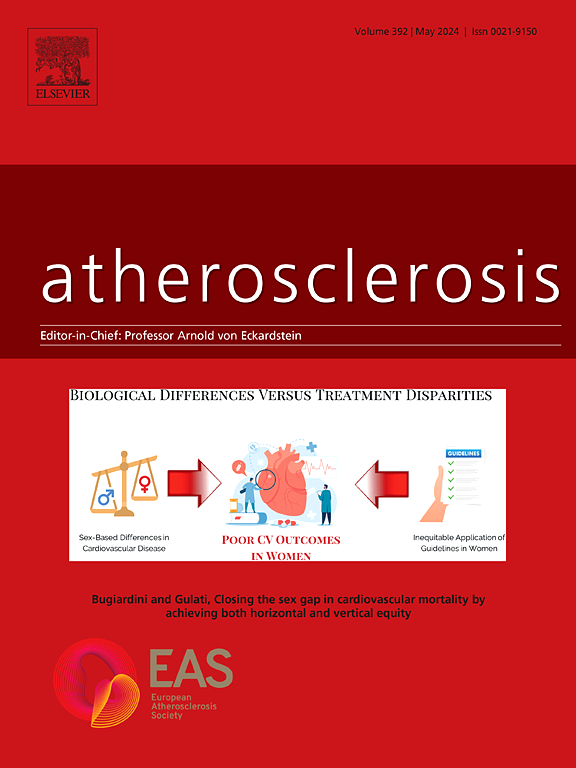Genetic association of circulating lipids and lipid-lowering drug targets with vascular calcification
IF 4.9
2区 医学
Q1 CARDIAC & CARDIOVASCULAR SYSTEMS
引用次数: 0
Abstract
Background and aims
Vascular calcification (VC) significantly increases the incidence and mortality of many diseases. The causal relationships of dyslipidaemia and lipid-lowering drug use with VC severity remain unclear. This study explores the genetic causal associations of different circulating lipids and lipid-lowering drug targets with coronary artery calcification (CAC) and abdominal aortic artery calcification (AAC).
Methods
We obtained single-nucleotide polymorphisms (SNPs) and expression quantitative trait loci (eQTLs) associated with seven circulating lipids and 13 lipid-lowering drug targets from publicly available genome-wide association studies and eQTL databases. Causal associations were investigated by univariable, multivariable, drug-target, and summary data-based Mendelian randomization (MR) analyses. Potential mediation effects of metabolic risk factors were evaluated.
Results
MR analysis revealed that genetic proxies for low-density lipoprotein cholesterol (LDL-C), triglycerides (TC) and Lipoprotein (a) (Lp(a)) were causally associated with CAC severity, and apolipoprotein B (apoB) level was causally associated with AAC severity. A significant association was detected between hepatic Lipoprotein(A) (LPA) gene expression and CAC severity. Colocalisation analysis supported the hypothesis that the association between LPA expression and CAC quantity is driven by different causal variant sites within the ±1 Mb flanking region of LPA. Serum calcium and phosphorus had causal associations with CAC severity.
Conclusions
Inhibitors targeting LPA might represent CAC drug candidates. Moreover, T2DM, hypercalcemia, and hyperphosphatemia are positively causally associated with CAC severity, while chronic kidney disease and estimated glomerular filtration rate are not.

求助全文
约1分钟内获得全文
求助全文
来源期刊

Atherosclerosis
医学-外周血管病
CiteScore
9.80
自引率
3.80%
发文量
1269
审稿时长
36 days
期刊介绍:
Atherosclerosis has an open access mirror journal Atherosclerosis: X, sharing the same aims and scope, editorial team, submission system and rigorous peer review.
Atherosclerosis brings together, from all sources, papers concerned with investigation on atherosclerosis, its risk factors and clinical manifestations. Atherosclerosis covers basic and translational, clinical and population research approaches to arterial and vascular biology and disease, as well as their risk factors including: disturbances of lipid and lipoprotein metabolism, diabetes and hypertension, thrombosis, and inflammation. The Editors are interested in original or review papers dealing with the pathogenesis, environmental, genetic and epigenetic basis, diagnosis or treatment of atherosclerosis and related diseases as well as their risk factors.
 求助内容:
求助内容: 应助结果提醒方式:
应助结果提醒方式:


